Procol Harum and ‘Whiter Shade of Pale’: That Melody!
by Jeff Tamarkin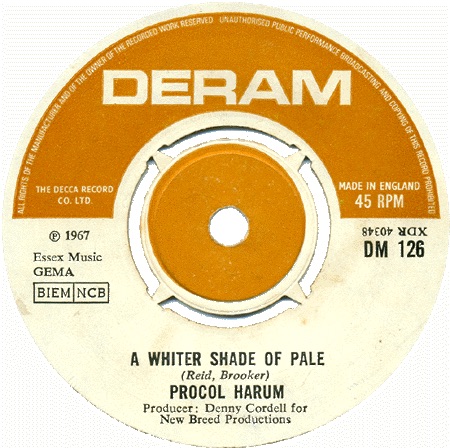 If you were a regular radio listener in the heady spring/summer of 1967, it was yet another revelation, a song that grabbed your attention the very first time. Perhaps, its churchy organ line and the midtempo pace reminded you of Percy Sledge’s #1 soul ballad of the year before, “When a Man Loves a Woman.” But that’s where any resemblance ended. “When a Man Loves a Woman” was plainspoken; the singer of this new song, “A Whiter Shade of Pale”—by a British group calling itself Procol Harum—wasn’t making it quite so easy:
If you were a regular radio listener in the heady spring/summer of 1967, it was yet another revelation, a song that grabbed your attention the very first time. Perhaps, its churchy organ line and the midtempo pace reminded you of Percy Sledge’s #1 soul ballad of the year before, “When a Man Loves a Woman.” But that’s where any resemblance ended. “When a Man Loves a Woman” was plainspoken; the singer of this new song, “A Whiter Shade of Pale”—by a British group calling itself Procol Harum—wasn’t making it quite so easy:
“We skipped the light fandango
Turned cartwheels ’cross the floor
I was feeling kinda seasick
But the crowd called out for more
The room was humming harder
As the ceiling flew away
When we called out for another drink
The waiter brought a tray”
That was only the first verse. It did not get any less opaque as it moved along.
“And so it was that later
As the miller told his tale
That her face, at first just ghostly,
Turned a whiter shade of pale
She said, ‘There is no reason
And the truth is plain to see.’
But I wandered through my playing cards
And would not let her be
One of sixteen vestal virgins
Who were leaving for the coast
And although my eyes were open
They might have just as well’ve been closed
And so it was that later
As the miller told his tale
That her face, at first just ghostly,
Turned a whiter shade of pale”
To this day—more than 55 years following its release—folks are still debating what it was all about. Keith Reid, who wrote the lyrics (and continued to write all of the group’s lyrics throughout its history, until recently), told Uncut magazine, “I had the phrase ‘a whiter shade of pale.’ That was the start, and I knew it was a song. It’s like a jigsaw where you’ve got one piece, then you make up all the others to fit in. I was trying to conjure a mood as much as tell a straightforward, girl-leaves-boy story. With the ceiling flying away and room humming harder, I wanted to paint an image of a scene…I wasn’t trying to be mysterious with those images, I was trying to be evocative,” Reid continued. “I suppose it seems like a decadent scene I’m describing. But I was too young to have experienced any decadence then. I might have been smoking [marijuana] when I conceived it, but not when I wrote. It was influenced by books, not drugs.”
So much for the words. You are, of course, welcome to your own interpretation. As for that evocative melody, those with a classical music background knew where it really came from: Johann Sebastian Bach’s “Ich steh mit einem Fuß im Grabe, BWV 156.” Procol Harum was among the first rock groups to openly turn to classical music for inspiration, and that device sure paid off well on this first-time effort.
So, what is a “Procol Harum,” anyway? The origin of the band name, like their hit, is shrouded in mystery. Says Wikipedia: “In the absence of a definitive origin, the name attracted various interpretations, being said to be Latin for ‘beyond these things’ (but the correct Latin translation of ‘beyond these things’ is ‘Procul his’ or translated as ‘of these far off things,’ the genitive plural ‘harum’ perhaps agreeing with an understood ‘rerum,’ ‘things.’”
Whatever—Procol Harum it was. And even if it remains one of the most misspelled band names in history (it is not Procul Harem!), it’s a name that is still fondly remembered today by many.
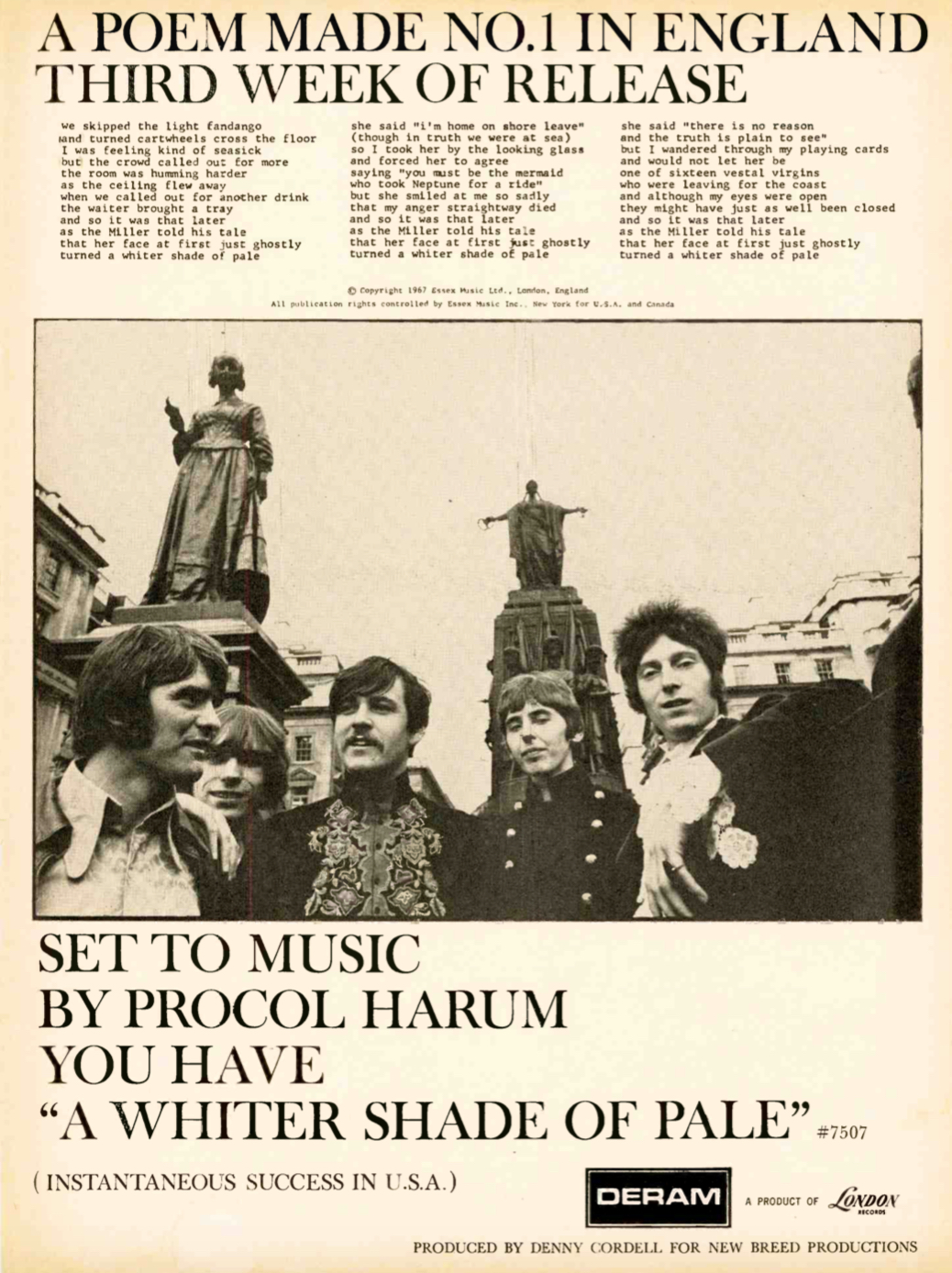
This ad for the single appeared in the June 17, 1967 issue of Record World
Some parts of the story are, thankfully, more definitive. The great voice you hear on “A Whiter Shade of Pale” is that of Gary Brooker—born May 29, 1945 in East London. He had been in an R&B band called the Paramounts since the early ’60s, along with the guitarist Robin Trower, multi-instrumentalist Chris Copping and drummer B.J. Wilson. When that band split in 1966, Brooker and Reid began writing songs together; among their first efforts was was “A Whiter Shade of Pale,” which was recorded at Olympic Studios with Brooker on piano and vocals, Matthew Fisher playing the signature organ line (decades later he would sue for royalties on the song, winning the case and nabbing a co-authorship credit), David Knights on bass, Ray Royer on guitar and a session drummer, Bill Eyden. Denny Cordell served as the producer, and the song was issued in the U.K. on Deram Records on May 12, 1967, climbing to #1 in the band’s homeland in only two weeks. (It was released on the same label in the U.S., making its way to #5 on the Hot 100, and #3 in Record World on Aug. 12.)
Among the biggest fans of “A Whiter Shade of Pale” was John Lennon, who was said to be so obsessed with it in the summer of ’67 that he played it incessantly.
By the time Procol Harum’s self-titled debut album was released in September 1967, the membership of the band had already shifted somewhat. Brooker, Fisher and Knight remained from the single, but now holding the lead guitar and drum spots were, respectively, Trower and Wilson from the Paramounts.
It quickly became apparent to rock fans on both sides of the Atlantic that this was not going to be a one-hit-wonder band: Procol Harum became a headlining concert draw for the next several years, as well as selling a respectable quantity of albums. Their self-titled debut landed at #47 in the U.S., followed in 1968 by Shine on Brightly (#24), 1969’s A Salty Dog (#32), 1970’s Home (#34—with Copping now handling both bass and organ, replacing Fisher on the latter) and 1971’s Broken Barricades. The group’s highest-charting album came in 1972, the #5 Procol Harum Live in Concert with the Edmonton Symphony Orchestra, which yielded the #16 single “Conquistador,” a song that had been featured in its original studio version on the band’s debut. That was followed by four other charting albums into 1977, with various personnel shifts (Trower went on to launch a successful solo career).
Watch the video for “A Whiter Shade of Pale”
Related: Brooker died in 2022
For most rock fans, Procol Harum will forever remain indelibly associated with that first single. “A Whiter Shade of Pale” is said to have sold over 10 million copies worldwide, officially named the most played recording of the past 70 years on the BBC. Along with Queen’s “Bohemian Rhapsody,” it was also named the Best British Pop Single of 1952–1977 at the Brit Awards and has reportedly been covered by more than 1,000 artists. The Procol Harum original has appeared on numerous compilation albums and in many films and TV programs, one of the most enduring songs of the Summer of Love. In 1998, “A Whiter Shade of Pale” was inducted into the Grammy Hall of Fame. (Astoundingly, the Rock and Roll Hall of Fame has yet to induct Procol Harum.)
Whatever it’s about, more than half a century after its release, the popularity of this landmark of ’67 refuses to subside.
Related: 1967 in rock music
Procol Harum’s recordings are available in the U.S. here, in Canada here and in the U.K. here.

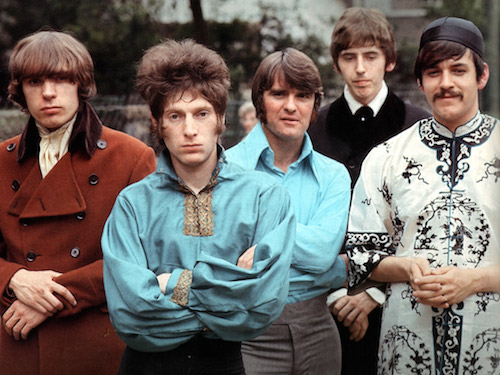
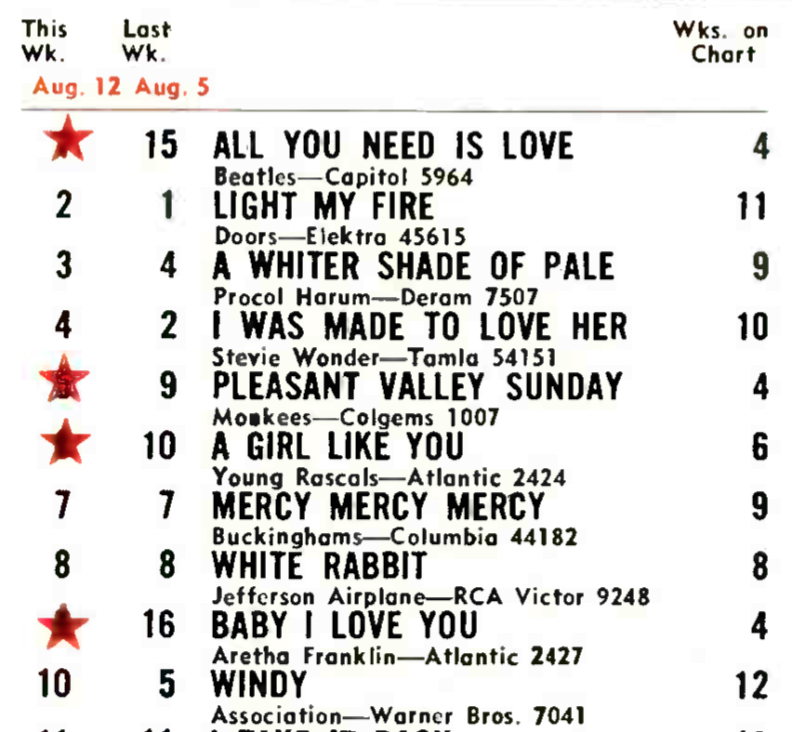




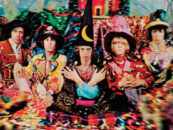

13 Comments so far
Jump into a conversationVery nicely done. Thanks for recognizing this important iconic band. Well done!
Jeff–love your career!! Thanks for the Golden Goldmine years. There IS another verse of WSOP…..it’s the second verse….just as opaque…..i believe there is an “uncut” track somewhere….now there’s a subject for you…..”hit singles that were actually edits”…..
I often thought that the song was about heroin, at least partially. I base that on the following:
“I was feeling kinda seasick
But the crowd called out for more”
Heroin, along with other opiates, can cause nausea, alluded to with this line: “I was feeling kinda seasick”. Seasick suggests nausea.
Heroin is addictive, hence “the crowd called out for more”. This imagery could be found in a number of songs of the 60’s and 70’s, e.g. Lou Reed (“Sister Ray”)…
Second left is guitarist Ray Royer not Keith Reid.
Thanks.
Thanks for this!
Until now I’ve been pretty sure that the melody was borrowed from “Air on the G String” BWV1068, but it’s very similar.
Best Regards
Heiko
I was in a band with Ian Macdonald in New York in he 80’s , I sang on two Alice Cooper records, I’ve played The original peppermint lounge on 45th st With Ronnie Spector. Made 4 records of my own band Beggars & Thieves
Ì thought Percy Sledge had written this Classic & that Procol just made it fly World Wide.!
Thanks for ‘the rest of the story & these informative comments.
Somehow, back then, it didn’t really matter what the lyrics meant, it was the song itself. The haunting sound of the keyboards, the pain in the vocals, and the mysterious poetry gave you one hell of a song. It has remained, even after all of this time, one of my top five songs of all time. I think I’ll just listen to it again and go back in time with a smile. Rock on, everyone!
I have never been one who cared much about lyrics since most of the time I can’t even make out what they are saying. :-/ So, like JennyB, this song has always been to me about the “haunting sound of the [organ], the pain in the vocals.” To me it has always felt like a dirge, and I have in my mind heard it playing at my funeral, which would be amazing on a pipe organ. Today, to my surprise, I read that Brian Wilson’s reaction to it was similar. The lyrics are often interpreted as about the end of a love affair, but why not the end, period? The lovers enjoy a wild romance but “later” she becomes ill, he won’t accept it or let her leave but she says it is “plain to see.” Later again, in death her face turns from merely ghostly to . . . . Lost love, lost life. Perfect funeral music for a child of the 60s. (I was 16 when it was released.)
I thought I read somewhere that the name Procol Harum was inspired by someone’s cat. Similar to the Stones’ LP titled “Voodoo Lounge”.
I read an interview with Keith Reid once that said it was about getting drunk and the lyrics, like getting drunk, got out of hand))). Seemed right to me. No wether he really said that ????
What a tremendous band. Saw them in Philadelphia 1970. Robin Trower can really rock and still touring. Used WSOP as a wedding song.